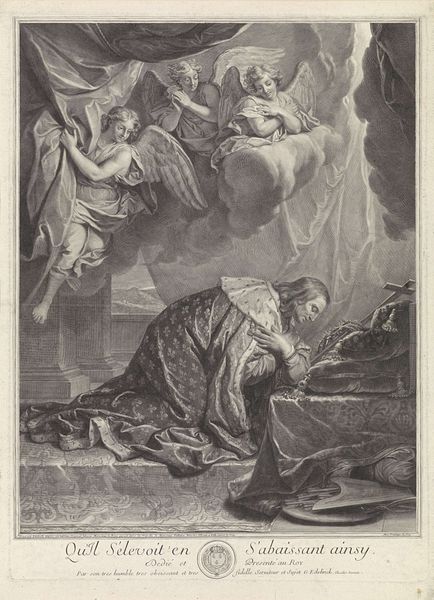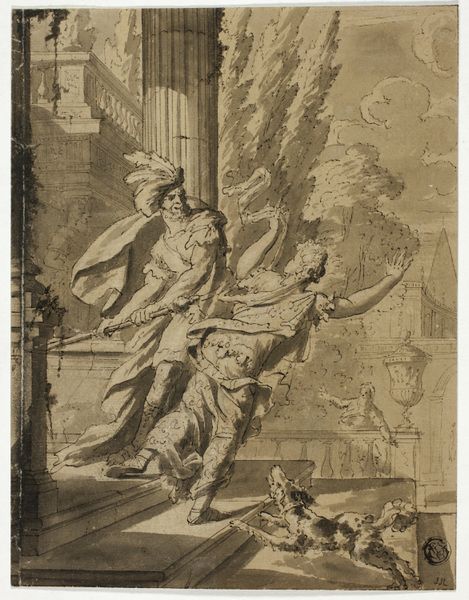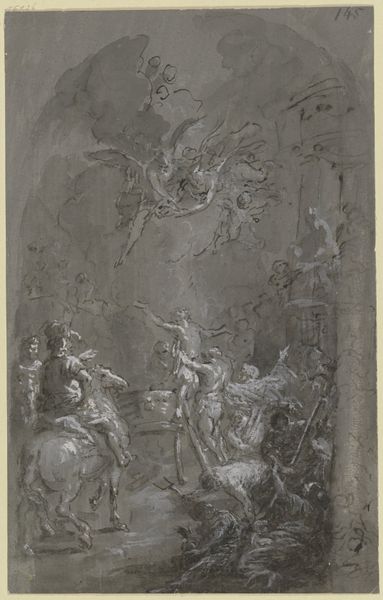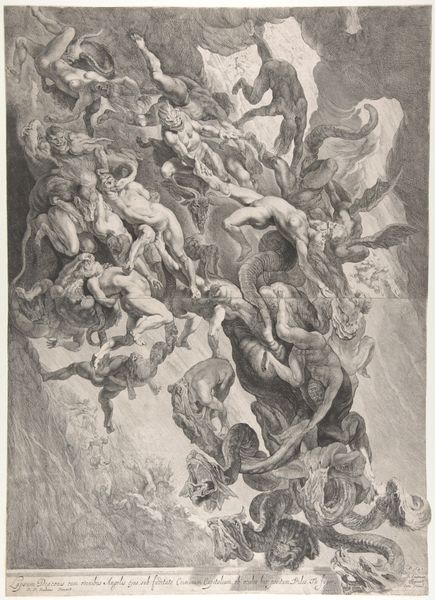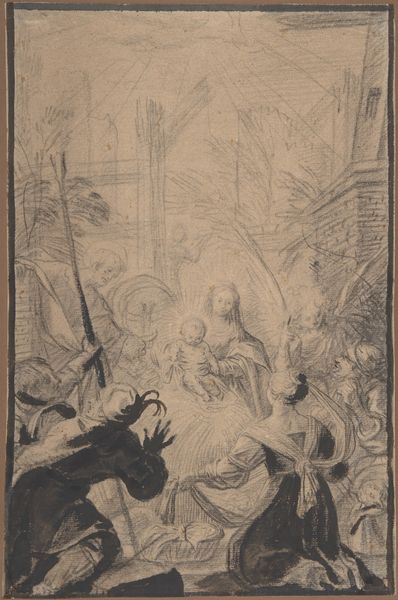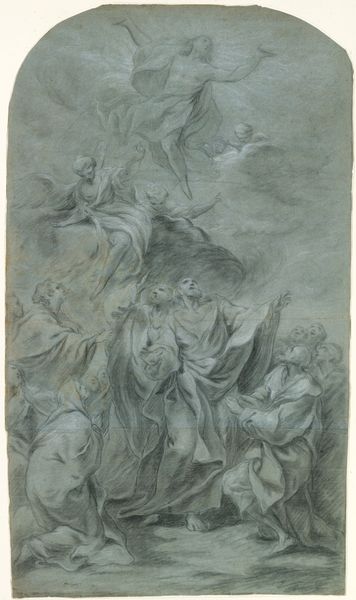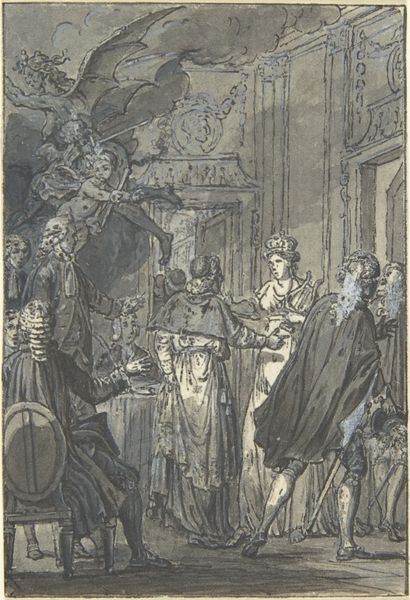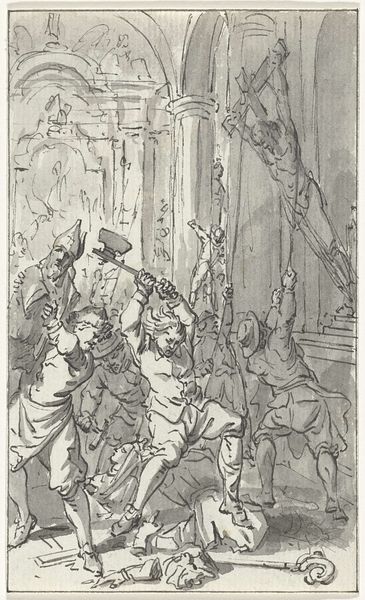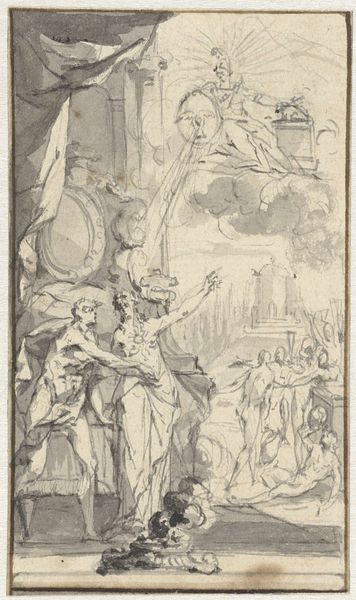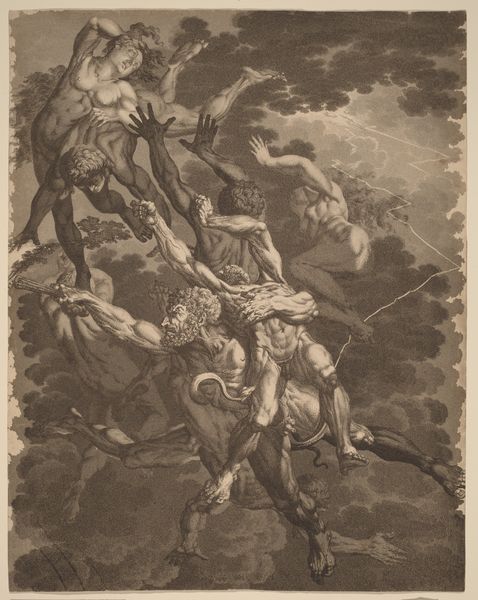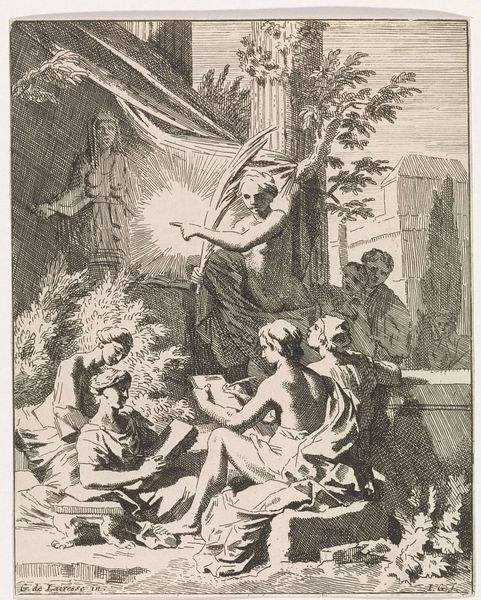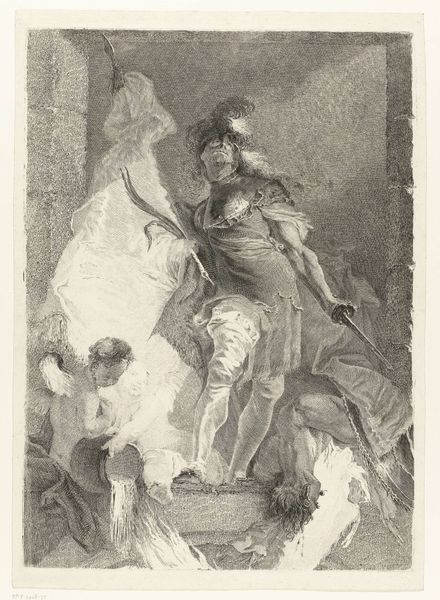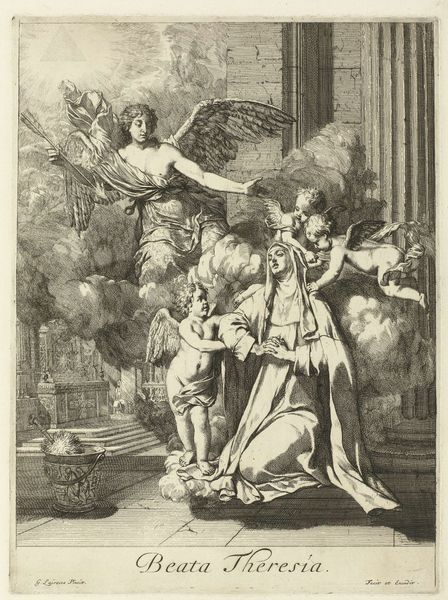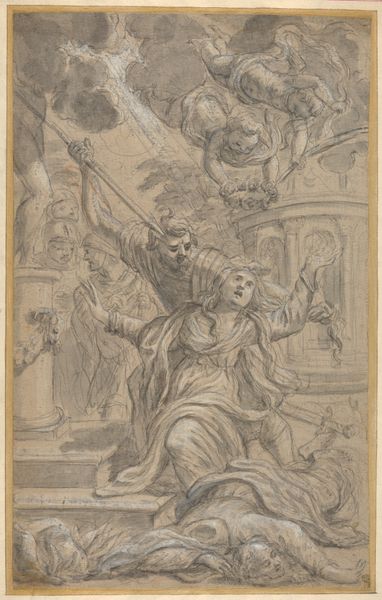
drawing, ink, charcoal
#
drawing
#
narrative-art
#
pencil sketch
#
charcoal drawing
#
mannerism
#
figuration
#
charcoal art
#
ink
#
pencil drawing
#
charcoal
#
history-painting
#
graphite
Dimensions: height 274 mm, width 179 mm
Copyright: Rijks Museum: Open Domain
Curator: So, here we have "Adoration of the Shepherds," a drawing from 1549 by the intriguing, yet rather anonymously named, Master of the Liechtenstein Adoration. It's rendered in ink, charcoal, and pencil. Editor: Wow, what a contrast. Ruins suggesting loss, a bright celestial spotlight, figures on the go—it feels dramatic and urgent, yet deeply serene. Almost as if disaster has come to this place and is on its way. Curator: It is interesting to think about disaster, particularly as it plays into the social and political climate of 16th century Europe. The religious landscape was turbulent, with the Reformation in full swing. Pictures of devotion, of the nativity specifically, served to support certain religious camps more than others. This subject allowed for artists to illustrate complex relations between humanity and divinity at play within political structures. Editor: Makes me wonder, who commissioned this? Because those ruins give it a weight, an elegy almost. It’s as if this holy moment is being framed by the past’s collapse. And then this strange burst of light coming from what appears to be someone holding a tube up in the air... That can't be biblical, can it? What is that? Curator: Well, artistic license, perhaps! And the Mannerist style definitely plays into the drama, what with the elongated figures and heightened emotion. This rendering focuses on the theatrical aspect of adoration. Who’s invited, who is welcome, and why? Consider the shepherds, often the poorest members of society; their presence in the Nativity story signifies that God's love extends to all, challenging social hierarchies of the time. It also creates a new political and societal body, as constructed within the church’s image. Editor: Right. Art is never truly neutral. I’m struck by how this one manages to capture both the tender intimacy of the holy family and this almost ominous sense of... transformation, maybe? Things aren’t stable; things are in motion. Curator: Indeed. And think about the function of a drawing like this one: it may be preparatory. An artist exploring themes and testing ideas that we, centuries later, can meditate on today. Editor: That’s powerful. To witness a step in this creator's journey. The political implications layered in give even more texture. It feels both timeless and utterly rooted in its moment.
Comments
No comments
Be the first to comment and join the conversation on the ultimate creative platform.
